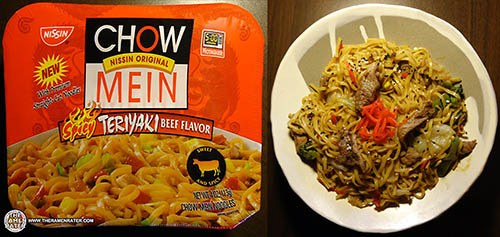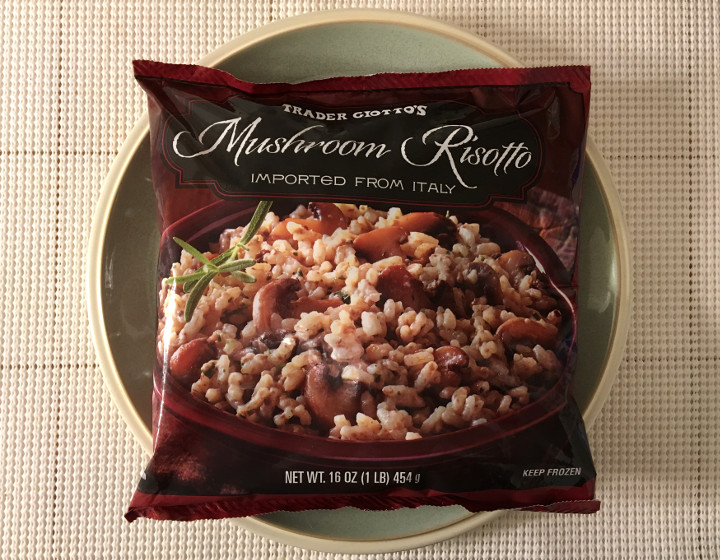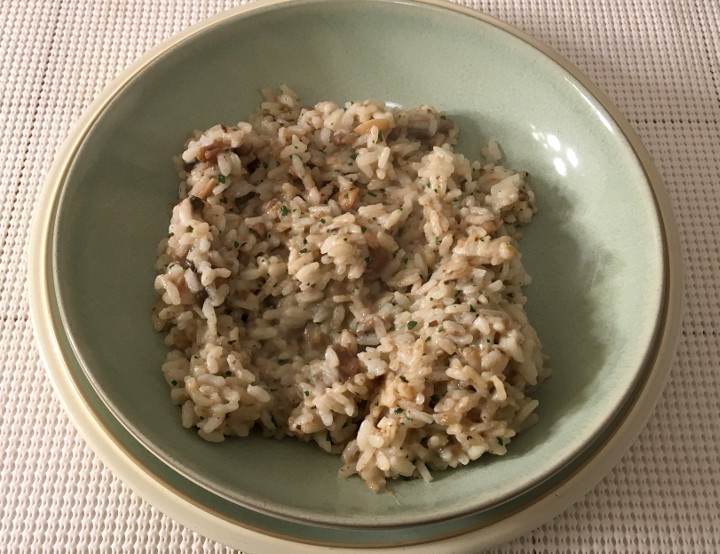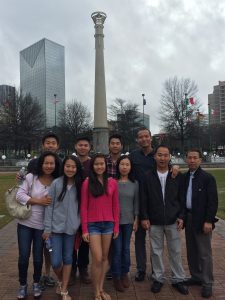Through globalization and the spread of people, items, and ideas, cross-cultural patterns naturally occurred throughout the world. Chinese immigrants came to America in search for the American Dream, especially prosperity and success for not only themselves but also for the family and future generations achieved through hard work. Being a first-generation Chinese-American and from my family owning a Chinese restaurant, I have been able to experience and observe the differences within authentic Chinese food and the Americanized Chinese food. Chinese and American cuisines are distinctive with the key differences that have caused for this phenomenon including, but not limited to, the ingredients, style of cooking, flavors, social eating, definition of eating, and other social and cultural differences, causing the shift and creation of an Americanized Chinese cuisine. These differences have led to the significance to deeper cultural connections through the Americanization of Chinese food to the overall Chinese American identity.
Traditional and mainstream Chinese cuisine is complex with the multiple use of ingredients, flavors, and style of cooking as they pay great attention to it and will not settle for bland or identical taste every day because food is supposed to be valued as enjoyment. This leads to the constant change in variety and combination. Along with globalization, which is the transfer of ingredients and styles of cooking, this allows the integration of different regions in china with different styles and preparations. Chinese homemade dishes, especially dinner, are not easy to make. Chinese cooking is an integral part of life and is a source of health and energy by using the rawest and natural ingredients. Due to the prioritization of health and regional availabilities, the Chinese daily life consists of no excessive meat dishes and people prefer inexpensive vegetables. Meat dishes are divided into 4 categories- chicken, duck, fish, and meat- and unlike Westerners, they use all parts of animals and are often considered as delicacies (J. Liu, 41). Based on the diner’s preferences and time of year, a chef focuses on keeping the food healthy and emphasizes on balancing the 5 flavors in harmony: saltiness, sourness, pungency, bitterness, and sweetness and fresh essence (J. Liu, 67). Fresh essence is considered with importance and is also defined as umami, a taste derived from a natural state and juice . Dishes can be stir-fried, fried, stewed, steamed, braised, simmered, roasted, deep fried, and etc. to bring out different textures and tastes based on the food type and goal of the aesthetic and flavor (J. Liu, 41).
The Chinese do not draw any distinction between food and medicine by viewing food as nourishment because they deeply value their health. “Only when food fails, then he prescribes medicine” (Lin, 250). Chinese culture attests to the fact well-being is reliant on whatever one consumes. There is a saying where one eats light in the morning, full in the afternoon, and nourishing at night. Unlike Western medicine, where people only go to the doctors when they are sick just to be provided with medicine, Chinese medicine consists of soups with multiple ingredients, such as different herbs or parts of animals in a stew to nourish and strengthen the body holistically and not to attack the disease solely. (Lin, 251) Westerns have recently discovered the multiple animals’ parts with greatest nourishing food value, such as kidneys, stomachs, intestines, blood, bone marrow and brains, while the Chinese have known for ages and never waste. The Chinese not only uses animal parts and food as medicine, but also for tastes and flavor. Bitterness is said to release heat in the body, improve vision, and detoxify the body, while pungency can regulate bodily fluids, blood and chi (Lin, 252). This emphasis of eating for preventative health has long term benefits, and ultimately leads to the ideals in living a long life.
Food in Chinese culture also allows for strengthening and developing social connections . A distinctive Chinese eating characteristic is the idea of shared dining where everyone sits around a round table and shares multiple dishes of food (J. Liu, 37). This social aspect may be related to the close attention the Chinese pay to blood relationships and kinship where they can see everyone’s faces and be able to communicate and interact with each other. “Chinese stress the aesthetics of food, the refinement of dining ware, and the elegance of the dining environment” (J. Liu, 32) in which there are social rules within eating such as obeying dining table rules when eating together, such as the noises produced or chopstick placements (J. Liu, 65). While the experience of eating is enjoyable in of itself, food is also an expression of love, content, and joy .
On the other hand, American cuisine, eating culture, and lifestyle are deeply influenced and reflected by the history of the United States due to the mass migrations of foreign people and cultures, which is also now known as the melting pot of cultures. The early years were deeply reliant on the availability of resources based on the geographical resources, which was often meat, animals, agriculture. The early 1900’s, the basis of American diet consisted of the “three M’s”: meat (salt pork), corn, meal and molasses (Dyson, 4) It typically consists largely of meat and potatoes with some sauces and condiments, small portion of vegetables and fruits, and lots of heavy sweets. This heavy meat and potato diet even transfers over to even breakfast. Men and women consisted of “heavily padded figures” popularized by the upper class and believed that a weighty figure demonstrated good health, which therefore caused the lower class followed suit with fatty meats and bottles of beer (Dyson, 2). Even early nutritionists emphasized on high protein products such as meat and saw little value in fresh fruits and actively opposed greens because they require more bodily energy to digest (Dyson, 3). Western cuisine when compared to Chinese cuisine, according to Lin, is seen as pretty dull and insipid and extremely limited in variety, especially when preparing vegetables. Vegetables are extremely limited in variety and style of cooking as they are merely boiled in water and always over-cooked until they lose color and look mushy (Lin, 253). According to studies from 1914 to 1928, the working class workers averaged 2 pounds more food per day, ate more refined sugar, bread, and starch products which lead to obesity and health problems (Dyson,4).
Scientific and technological advancements with food production, processing, and transportation revolutionized food in America. This led to increased industrialized and highly processed food, such as canned and dried fruits, vegetables, grain products. Economic productivity and convenience in the United States became more of a priority than taste, which soon led to injections of vitamins, antibiotics, and growth hormones for mass productions, lower cost in food, and increased portions, whereas the Chinese emphasis on the natural. Working women were expected to be married and full-time homemakers, but as both parents became employed, the slow complexities of food became an inconvenience at home. This led to frozen meals, dubbed “TV dinners” consisting a portion of meat, starch, and vegetables with increase synesthetic chemical additives (Dyson, 5). With the increased popularity and demands of frozen food, it led to more opportunities for variety and innovations due to the introduction of microwaves as a household technology to “zap” frozen dinners after work (Dyson,7). Similarly, take-out restaurants also became popular alongside fast-food restaurants and drive-thrus. “Today, Americans eat and average of five meals away from home every week, expending more money on food prepared outside the home than on that made in their own kitchen” (Smith, 25). With the fast-pace of society and more individualization of food, families are no longer eating with each other and are replaced by TV screens for efficiency, leaving no time for conversation.
The American cuisine has been impacted by ethnic influences, which has resulted in a melting pot of dishes, cooking styles, and fusion cuisines. Some dishes, such as burger and hotdogs that are typically considered All-American, actually originated in other countries or cultures like Germany, but it has become customized to American tastes through different cooking style. The newly developed categorization of New American cuisine consists of the Americanization of various foreign cuisines through mixing and matching flavors, ingredients, techniques, and other elements from other cultures but cannot be categorized into one specific region. It is based upon “reinterpretation, reinvention, eclectic, inventive, mashup” and taking risks and inspirations in order to create a new narrative and represents the melting pot of America (Armstrong, 2016).
The word “American” itself is associated with race, which also means white. “Globalization is equally capable of maintaining and creating cultural heterogeneity or diversity because it brings a defense of the local, the creative invention of tradition, blending old and new ideas, things, and proactive” (Crowther, Intro). This consist of negotiations between cultures, but in some case, assimilation is a more accurate term. Immigration was practically closed for many years, so when the Immigration Act of 1924 came about, people held on to the connection to the “old country American” food. People, such as teachers, school lunch planners, and advertisers pushed second and third generation immigrants to assimilate and “Americanize” their diets (Dyson, 4). People that assimilated and adapted to the “white” culture are the ones that are able to gain success the fastest, however, that does not come without racial and social prejudice. With the Chinese Exclusion Act in 1882, the Chinese faced constant racial harassment and discrimination in their economic and social lives (H. Liu, 2). When other jobs were not available to them in the United States, most Chinese immigrants were driven into the restaurant trade. In order to expand outside of the populated Chinatown community filled with racial prejudice, there was the urge to Americanize their food to reach a wider audience. As the Chinese have adapted themselves to American society, some elements of their home cultures remained, others have completely disappeared, and others have changed.
The abundance and popularity of Chinese restaurants throughout the US has integrate itself as an integral part of the American life. However, all this began in the mid-1890s and early 1900s with the dish called chop suey that spoke to non-Chinese patrons across racial boundaries and was the first purposefully synthesized cooking style presented to American eaters that amounted to a nationwide culinary craze (Mendelson, 100). What constituted chop suey’s culinary identity in America were a number of social expectations in which American clients desired Chinese dishes to be genuine and Chinese owners hoped to accommodate to American tastes. This led to chop suey’s authenticity as a locally constructed invention. The success and popularity of the Chinese American restaurants revolves around the food still feeling Chinese and foreign enough without actually delving into real Chinese food of taste and delicacies. The calculated equilibrium of flavors and textures is unlike anything that the new consumers have experienced which along with the fast preparation, service, and affordability became useful when competing with other fast food restaurants. This ultimately made Chinese food associated with comfort food because of the convenience, fattening, and umami flavor with the mix of sweet, salty, and spicy because society would not allow them to ascend to fine-dining. The term “chow” is similar to the idea of stir-fry which was foreign to the westerners and consists of short blast of powerful heat with pieces of food cut into right shapes and sizes and added in lightning-fast stirring and tossing of the ingredients as they hit the hot fat metal of a wok (Mendelson, 107). The Americanization of fried rice, chow mein, and lo mein soon followed suit after this cooking style from chop suey and also based on home-style village food. Some even regard these dishes as “a culinary joke at the expense of the foreigner” (Dyson, 6). Compared to Chinese dish counterparts, these have much more pork, meat, and is greasy. By focusing on quantity instead of quality, a large menu was created to cater to customer’s desire for options, with essentially all the same process, just slight variations in meat, base, or sauce.
Chinese American cooks substituted ingredients for profitability, flavors, textures to parallel the flourishing trends in mainstream American cuisine, which the Chinese discovered through working as cooks in private homes. Cheap and readily available cornstarch gave: sauces a translucent gloss while thickening them to non-Chinese desired degree, the addition of food coloring or dye, and batter dipped and fried boneless nuggets of pork or chicken. In order to please America’s sweet tooth, the sweet-and-sour sauces was invented due to the notion that the higher the sugar content, the happier the audience (Mendelson, 117). To further tailor to the American standards, Chinese restaurateurs removed unpopular items as bean curd, whole fish, chicken feet, and most steamed dishes that are seen more as more daring, adventurous, and daunting to non-Chinese (Mendelson, 123). However, these items can still be found in Chinatowns, which are perfect the adventure-seeking tourist in search for authenticity. This reveals the clear disconnect between the authentic and the Americanized version with the Chinese food being inaccessible and out of touch with American tastes, culture, and identity.
The Chinese American success in assimilation to the “American character” has transcended to them being called the “model minority” through educational success, achievements, occupational status, and incomes (Wang, 181). However, this has not come without racial discrimination and seclusion and being called the model minority is basically saying that the US culture is superior and that those who assimilate and let go of their own culture are the ones who will be praised. The identity, status, and destiny of the Chinese people abroad are not homogenous nor static. One of the first waves of Chinese immigrants were laborers to seek new opportunities and were seen as “useless, undesirable, and unassimilable immigrants” (Tow, 31). With the strong anti-Chinese sentiments and the feeling of detachment from their roots, these laborers only objectives were to advance their own economic wellbeing on the behalf of their families in order to eventually return to their ancestral villages for retirement due to their loyalty to traditions and culture (Wang,186). Through further exclusion and segregation, the birth of second generation Chinese Americans were forced to choose between being Chinese and American, but most chose to be Americanized and conform to values and behaviors in pursuit to be accepted by the white society. This includes aligning their loyalty to the dominant countries they are assimilating to as minorities. The Chinese are hardworking and aspired to improve their conditions to develop their communities and advance Americanism through learning the English language in their spare time and learning the American cultures from their children who attend schools. Chinese people in America are often seen as honest and low-abiding citizens as most Chinese Americans still adhere to their old teaching of modesty. Due to the nature and nurture in training of Chinese homes, the parents pass along the traits of politeness, respectfulness, and gratefulness from their culture to their children which may also be why Chinese Americans are also so easily vulnerable to being victimized through racial persecutions (Tow, 65). However, Chinese-Americans also gained status in their middle-class ranks through the American-born generations and the educated and affluent Chinese immigrants, while also being exemplary and “ideal pupils” (Tow, 77). Through the profitability of Chinese restaurants, work ethics, and low start-up costs, Chinese Americans were able to start building their success and achieve the American Dream of democratic and capitalistic ideals and transcend through the social and economic classes and difference. Today, the modern Chinese merchants, students, and white collar workers are no different than that of American counterparts in their methods of conducting businesses and way of living.
Consequently, through the acts of globalization, migration, and overcoming racial discrimination, Chinese immigrants in the United States have wholly contributed to the Americanization of Chinese food that all started with chop suey. With hard work, creativity, and behaviors, Chinese immigrants and Chinese-Americans revolutionized what Americans know about Chinese food and has become a staple in the American culture and cuisine. The differences in Chinese and American cuisines are prominent through expectations and use of ingredients within eating behaviors and attitudes, cooking style, and flavors. America would not be where it is today without the existence of immigrants who provide a solid foundation with a backbone of strength and diversity, especially through food. Because of those such as Chinese immigrants and Chinese-Americans chasing the American dream, America is now largely powered on the product of one’s long history of hard work and grit. In essence, American’s are feeding America.
References:
Armstrong, Mindy. “The New American Cuisine.” Flavor & The Menu, 2 Nov. 2016, www.getflavor.com/new-american-cuisine/.
“Chinese Take-Out.” Dubious Gastronomy: The Cultural Politics of Eating Asian in the USA, by Robert Ji-Song Ku, University of Hawai’i Press, 2014, pp. 49–78. JSTOR, www.jstor.org/stable/j.ctt6wqw82.6.
Crowther, Gillian. Eating Culture: an Anthropological Guide to Food. University of Toronto Press, 2013.
Dyson, Lowell. “American cuisine in the 20th century.” Food Review/National Food Review 23.1482-2016-121404 (2000): 2-7.
Liu, H. (2009). Chop Suey as Imagined Authentic Chinese Food: The Culinary Identity of Chinese Restaurants in the United States. Journal of Transnational American Studies, 1(1). Retrieved from https://escholarship.org/uc/item/2bc4k55r
Liu, Junru. Chinese Food. Cambridge University Press, 2011.
Lin, Yutang. The Importance of Living. Harper, 1998.
Smith, Andrew F. Eating history: 30 turning points in the making of American cuisine. Columbia University Press, 2009.
“The Birth of Chinese American Cuisine.” Chow Chop Suey: Food and the Chinese American Journey, by Anne Mendelson, Columbia University Press, New York, 2016, pp. 99 -137. JSTOR, www.jstor.org/stable/10.7312/mend15860.11.
Tow, Julius S. The Real Chinese in America: Being an Attempt to Give the General American Public a Fuller Knowledge and a Better Understanding of the Chinese People in United States. New York City: Academy Press, 1923. Print.
Wang, L. Ling-chi. “Roots and Changing Identity of the Chinese in the United States.” Daedalus, vol. 120, no. 2, 1991, pp. 181–206. JSTOR, www.jstor.org/stable/20025379.





